Abstract
Nine normal rhesus monkeys were injected with homologous thyroid preparations, consisting either of a crude extract, partially purified thyroglobulin, or enzymatically dispersed viable cells. One monkey was injected with a preparation of heterologous human thyroid microsomes. The course of the disease was followed by periodic biopsies of the thyroid gland and by circulating antibodies. The latter were detected by tanned cell haemagglutination, complement fixation and cytotoxicity. The serum was also examined for levels of complement and for thyroid hormones.
Injection of partially purified monkey thyroglobulin resulted in the production of antibody both to thyroglobulin and to the cellular antigen. Inoculation of enzymatically dispersed viable thyroid cells led to a greater production of cytoplasmic antibody with a small and delayed production of antibody to thyroglobulin. Heterologous immunization of a monkey with human thyroid microsomes resulted in the production of autoantibodies to thyroid and minimal thyroid damage. There was considerable variation in antibody response and degree of tissue injury in different monkeys although injected with a similar antigen. There was no consistent association between circulating antibodies and pathological changes in the thyroid gland. Levels of complement varied but showed a definitive decrease in some animals with thyroiditis. There was no correspondence between tissue damage and protein bound iodine or thyroxine iodine.
Full text
PDF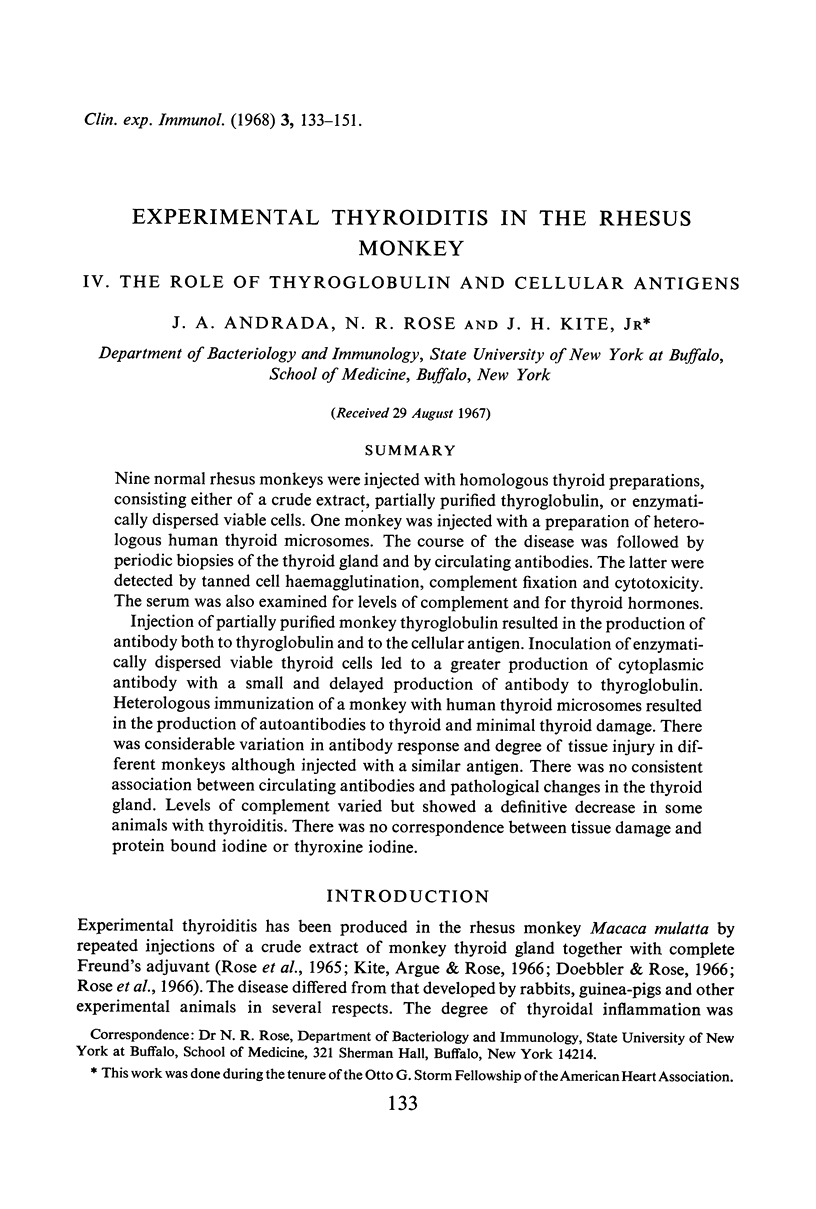
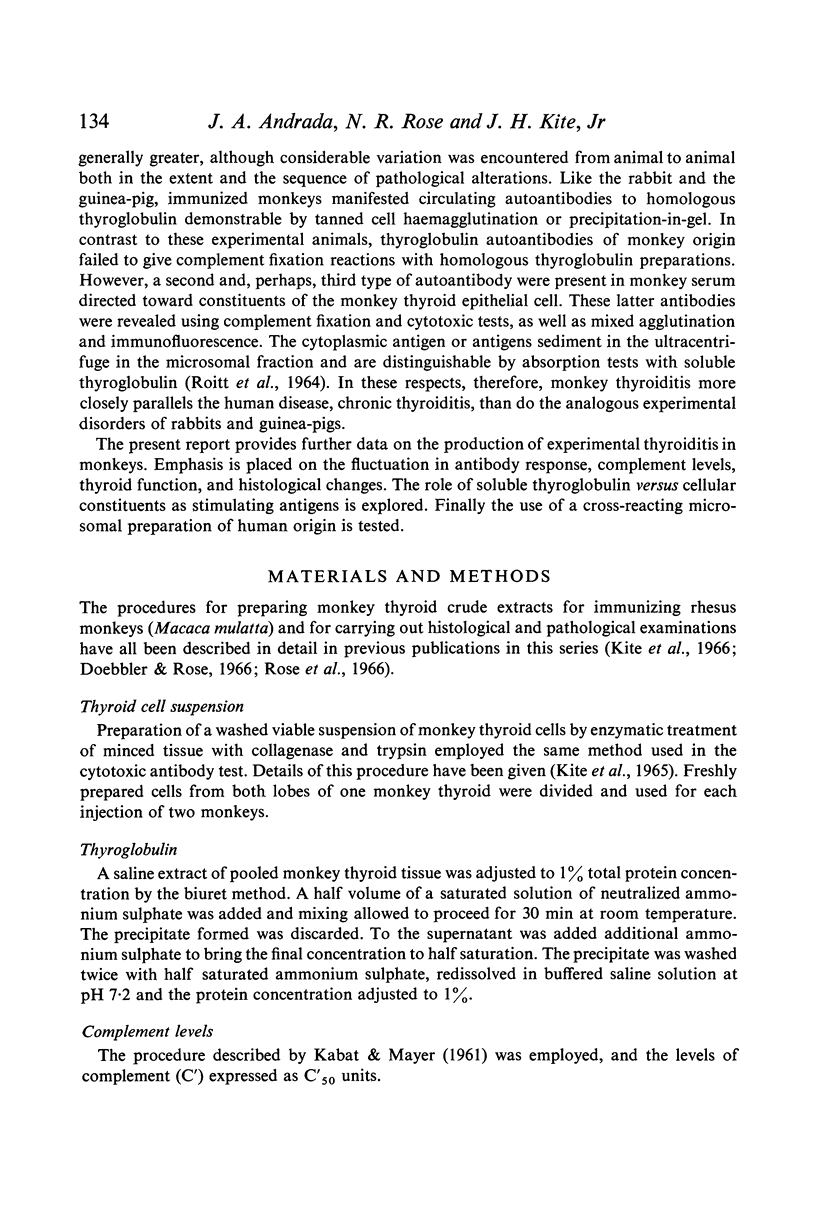
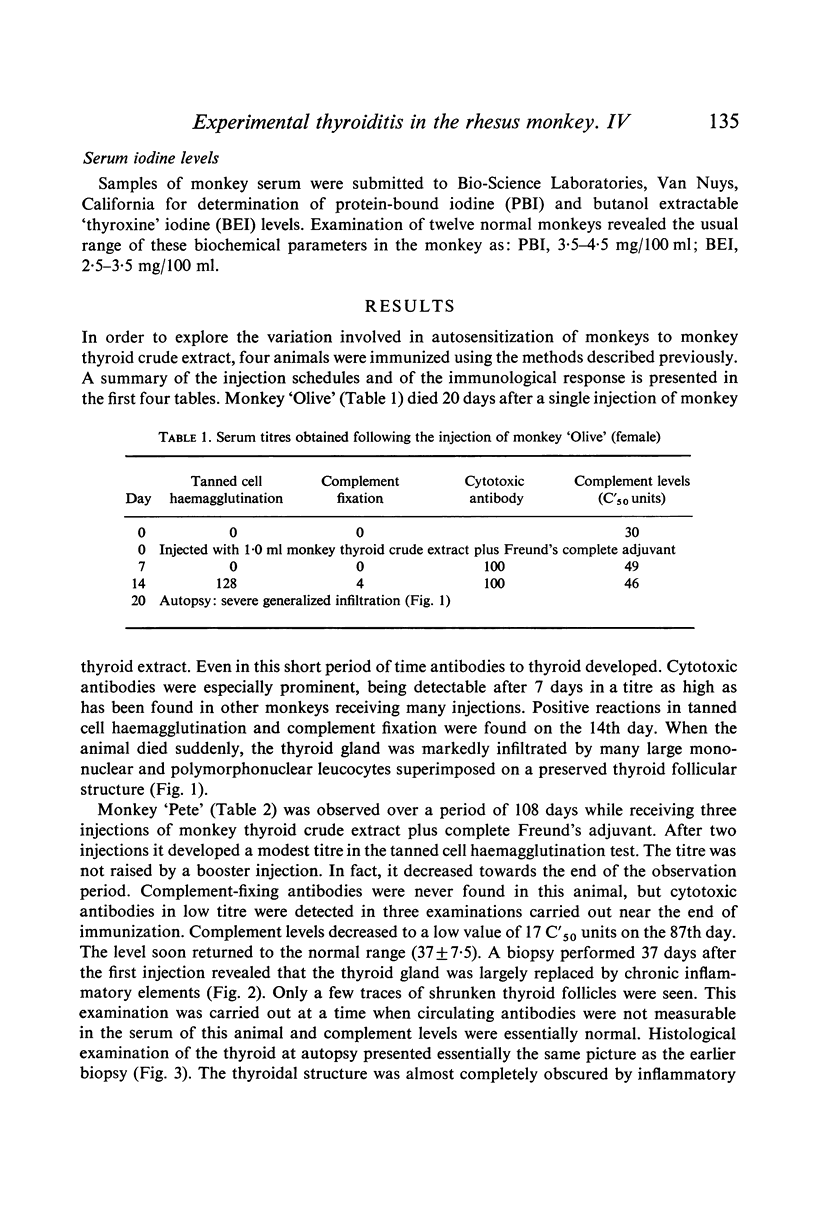
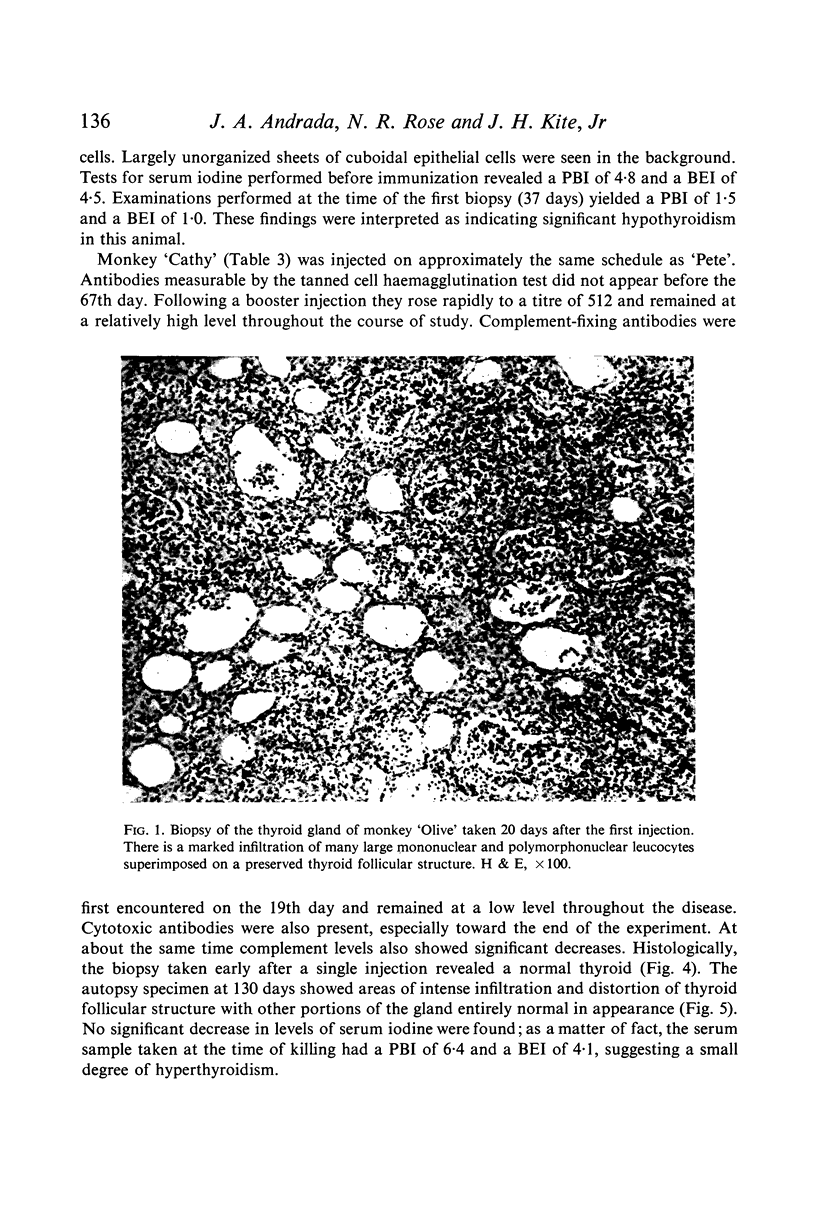
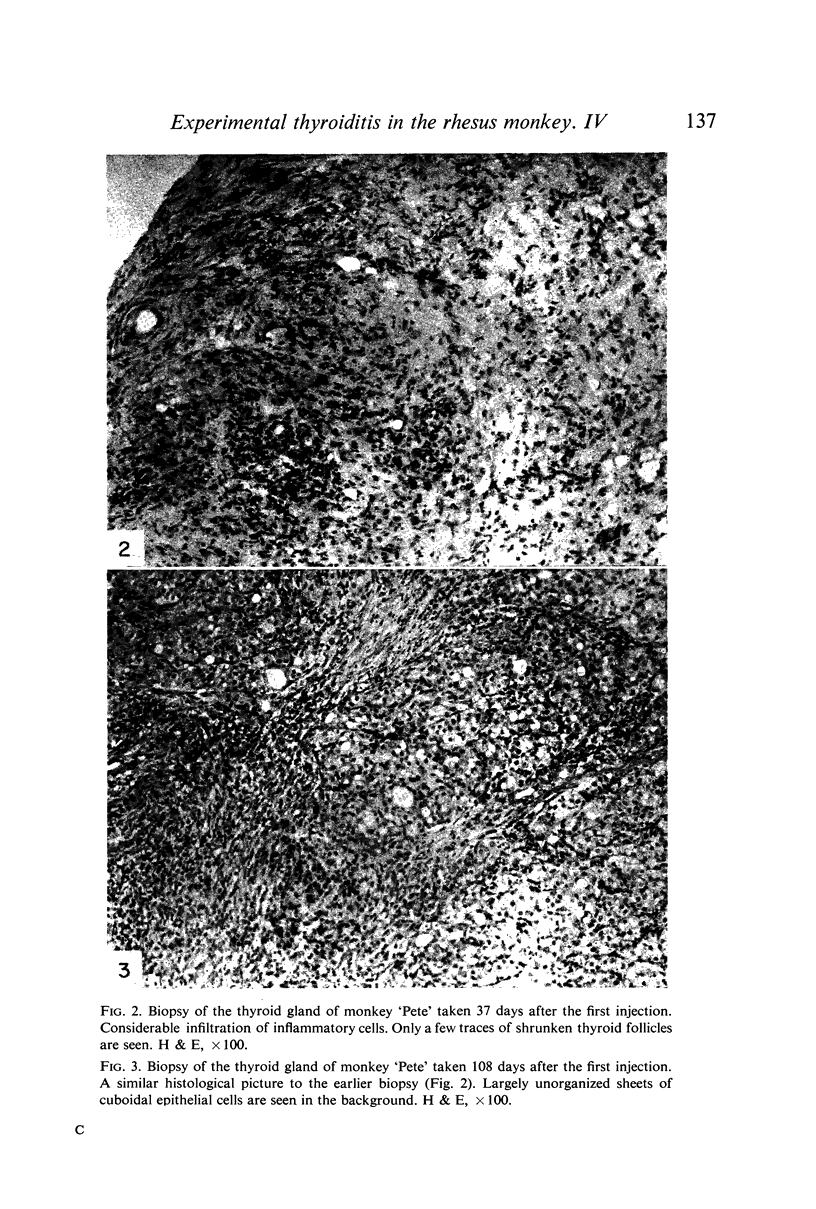
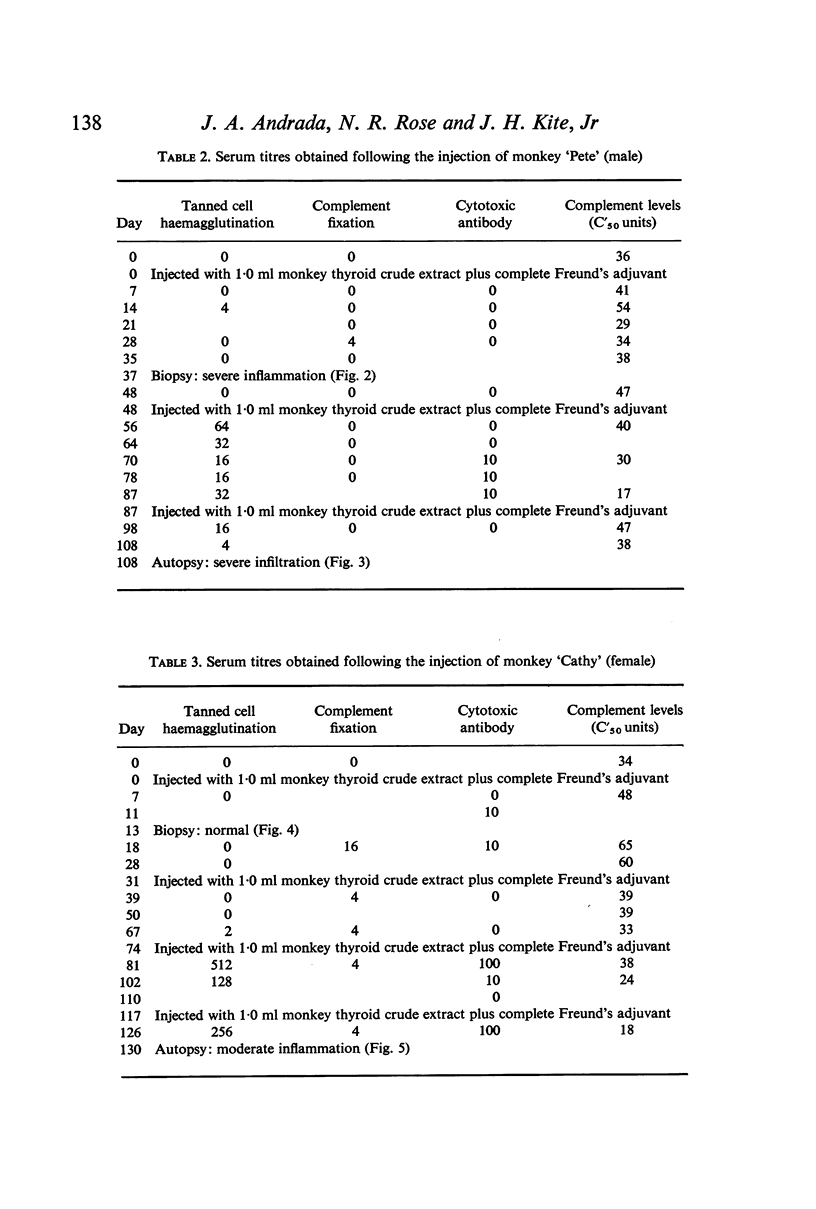
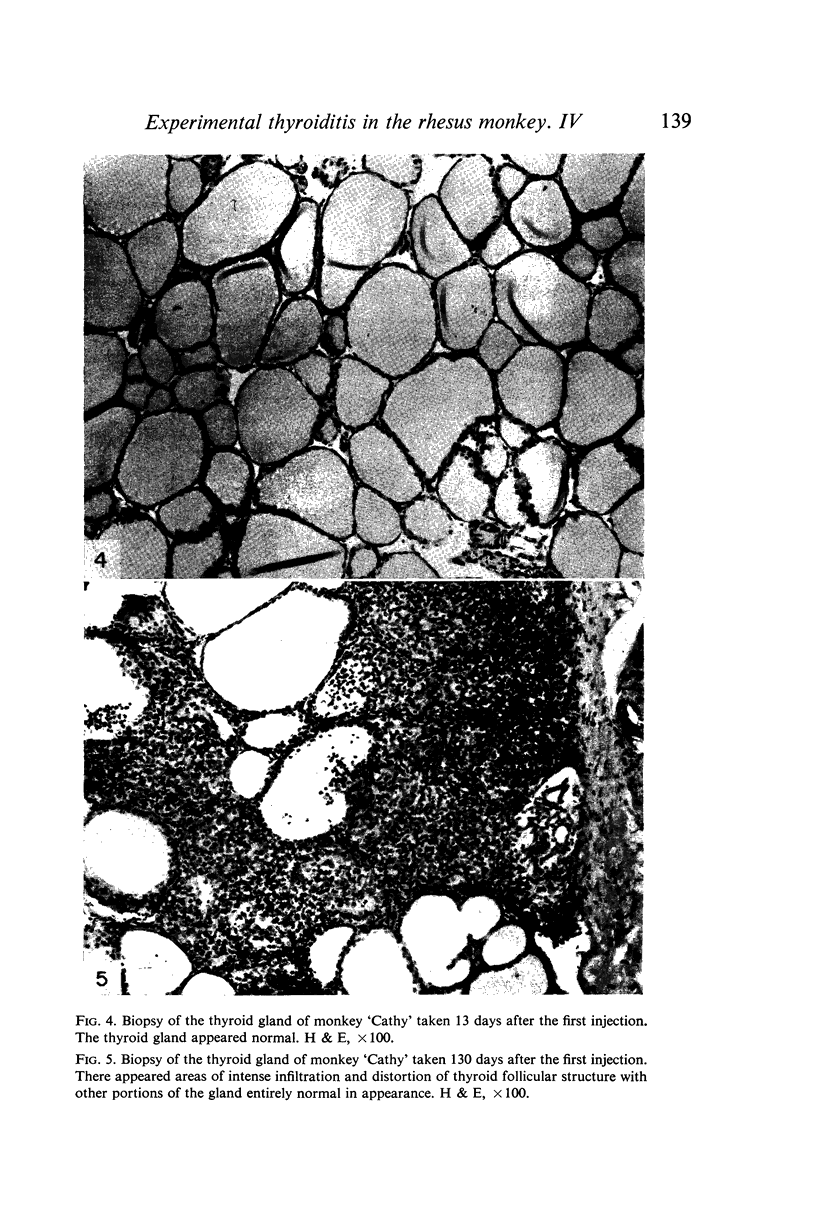
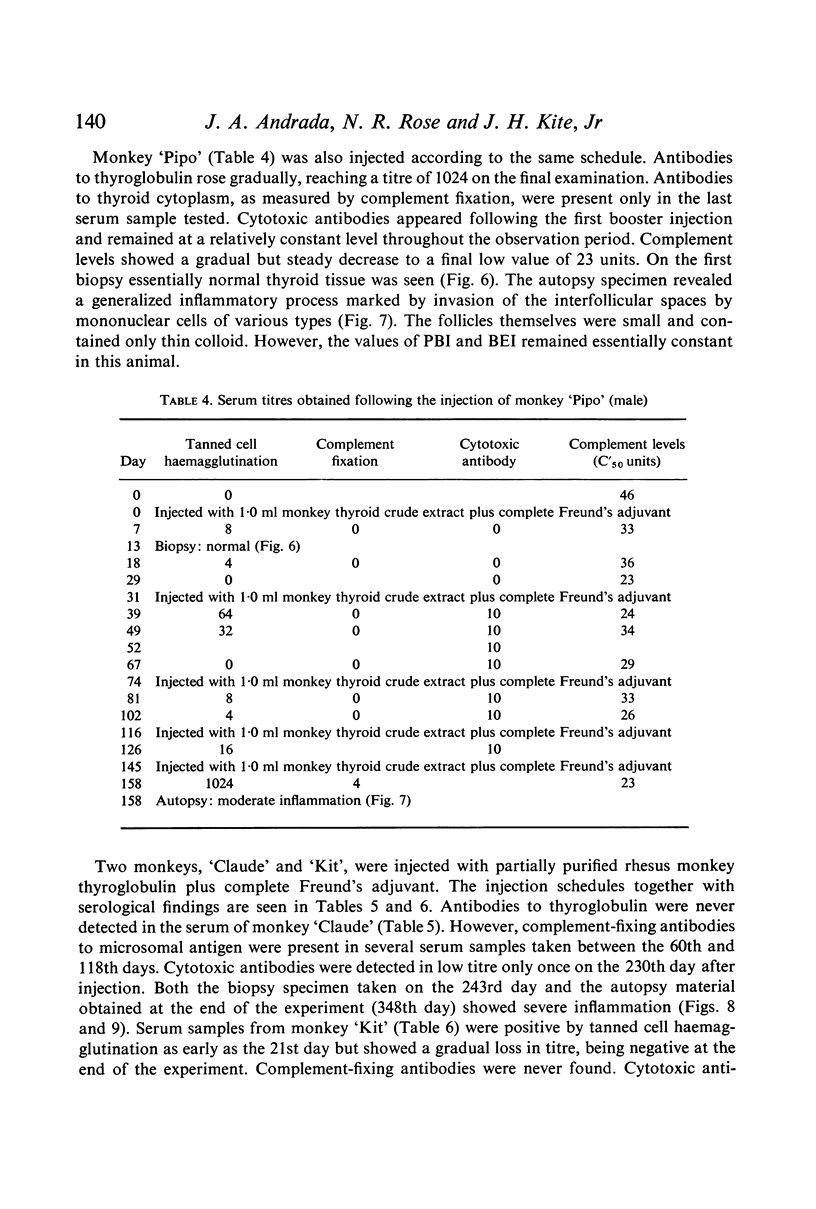
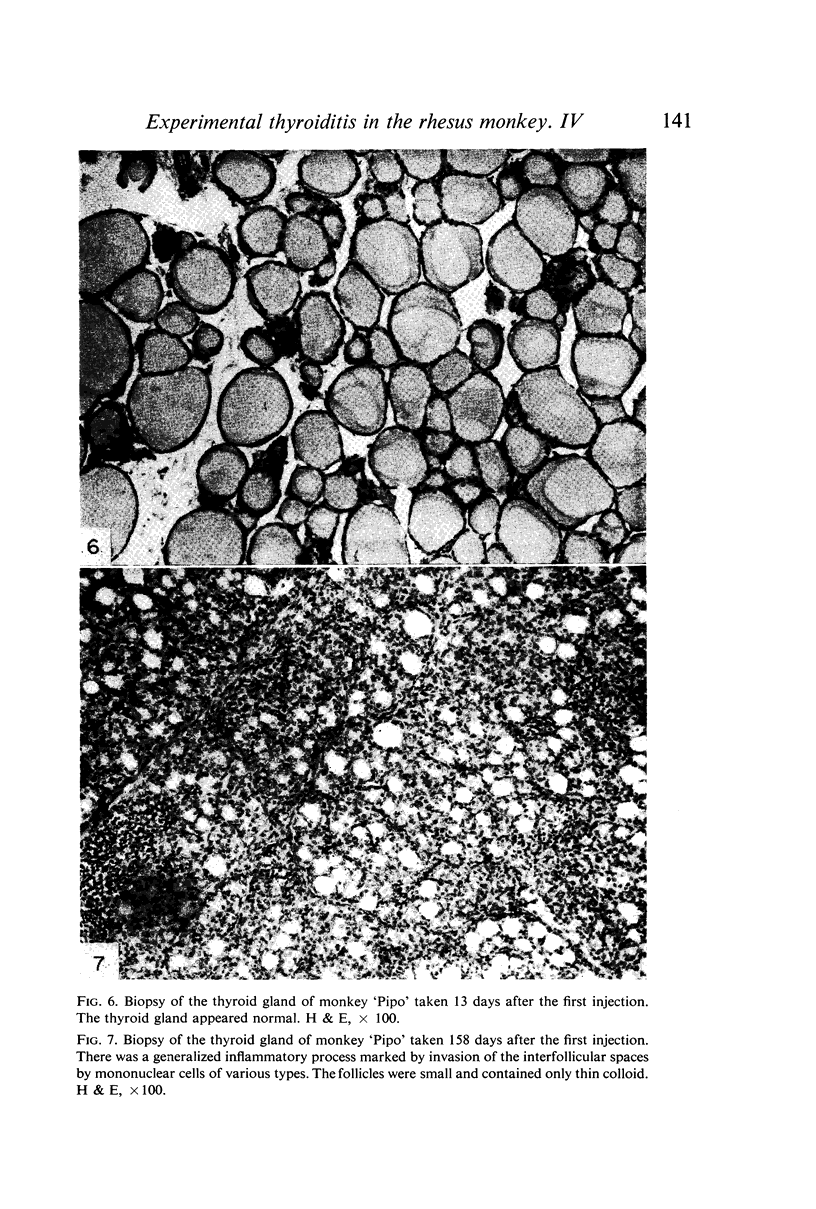
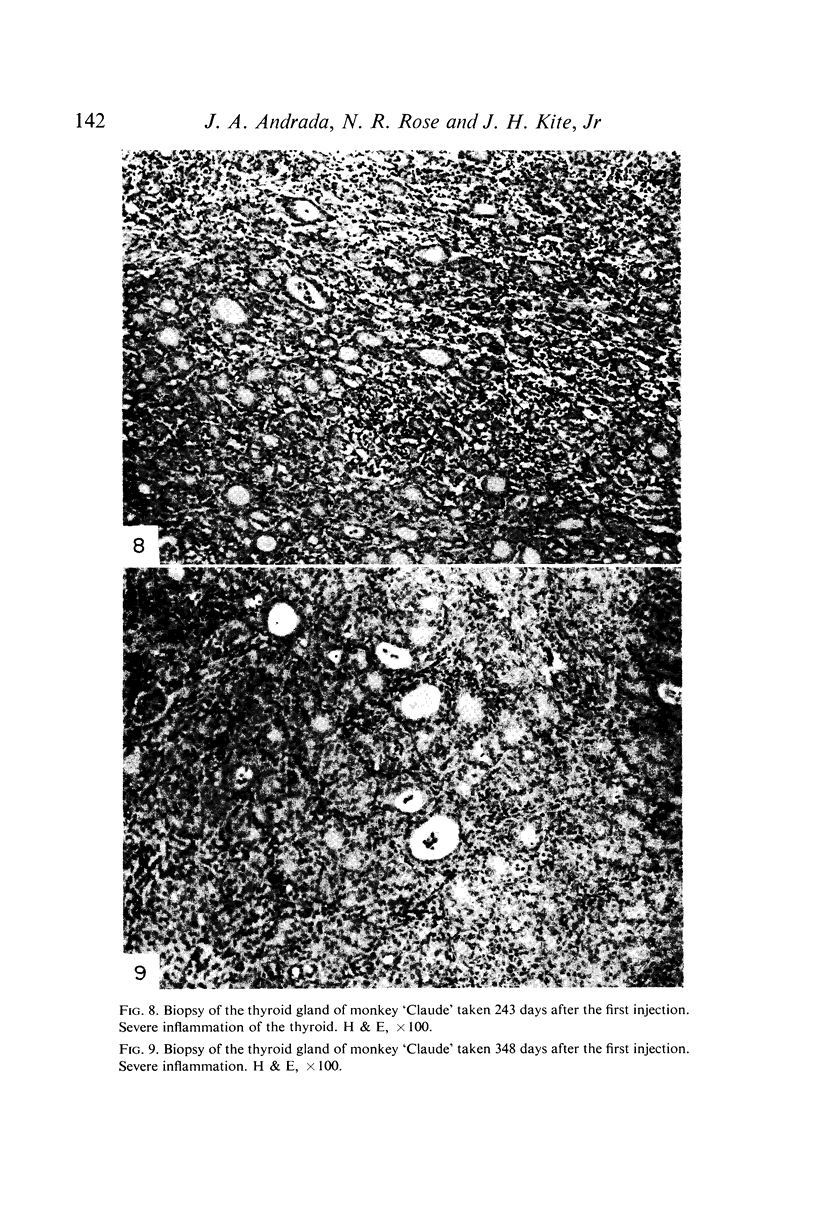
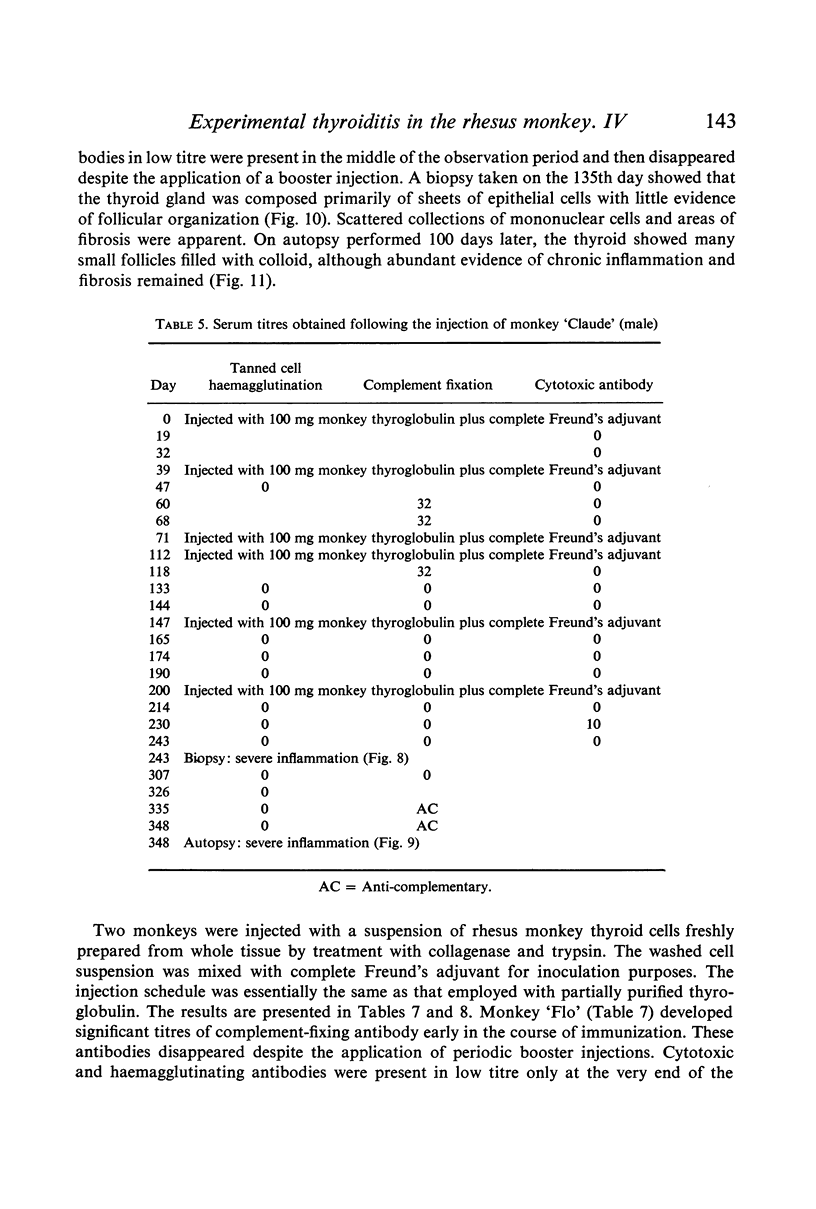
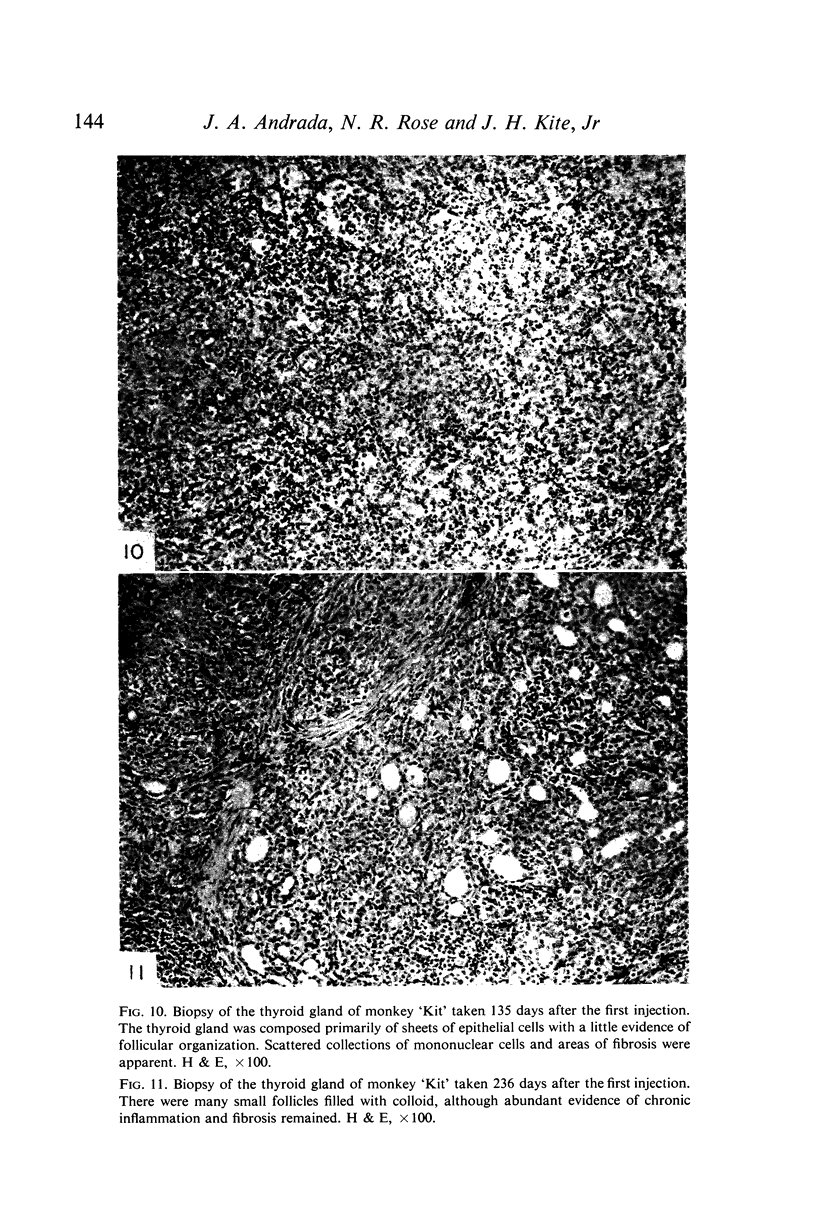
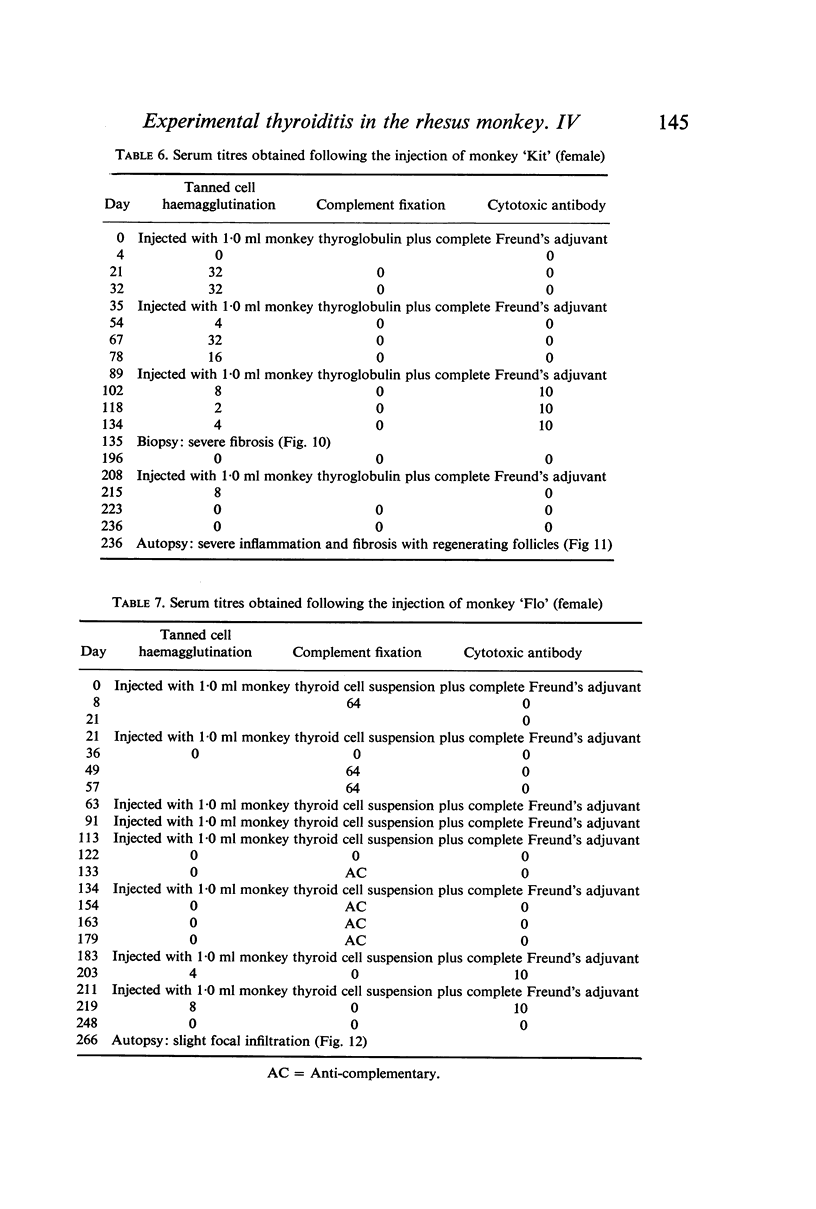
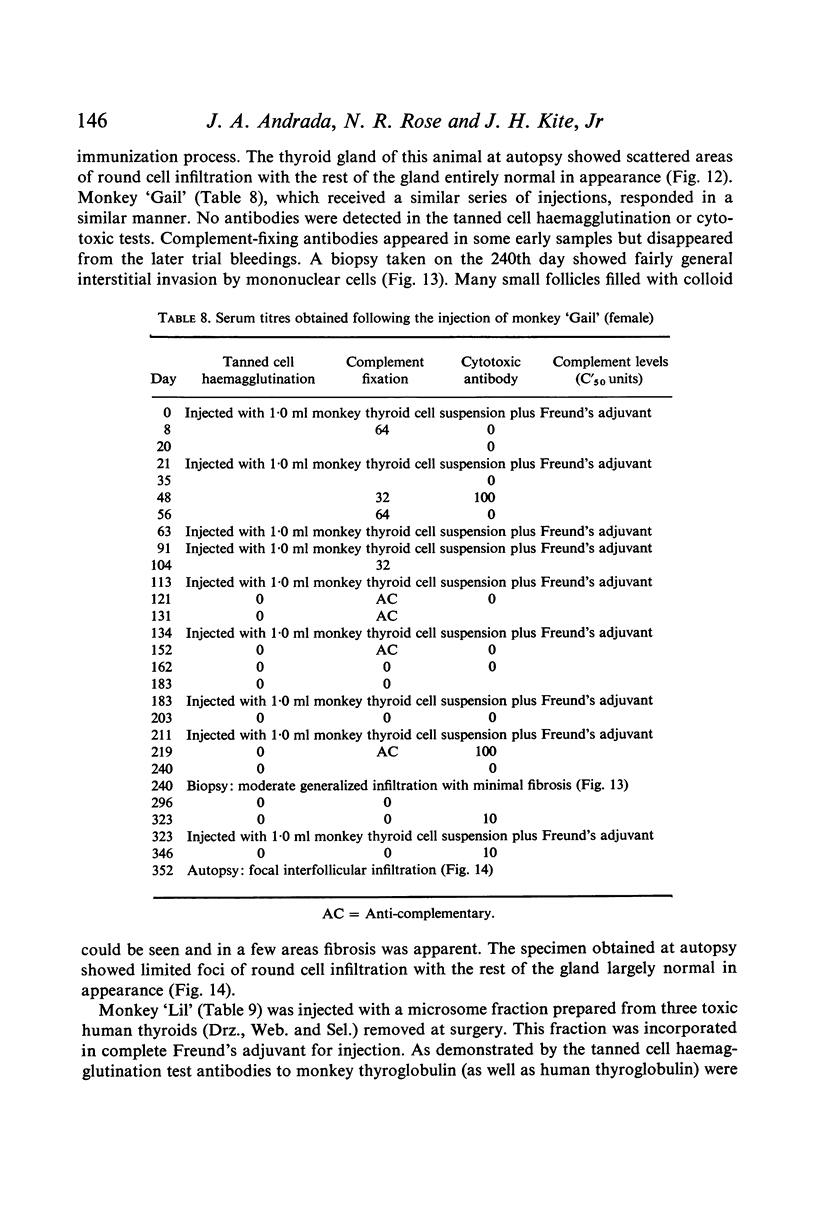
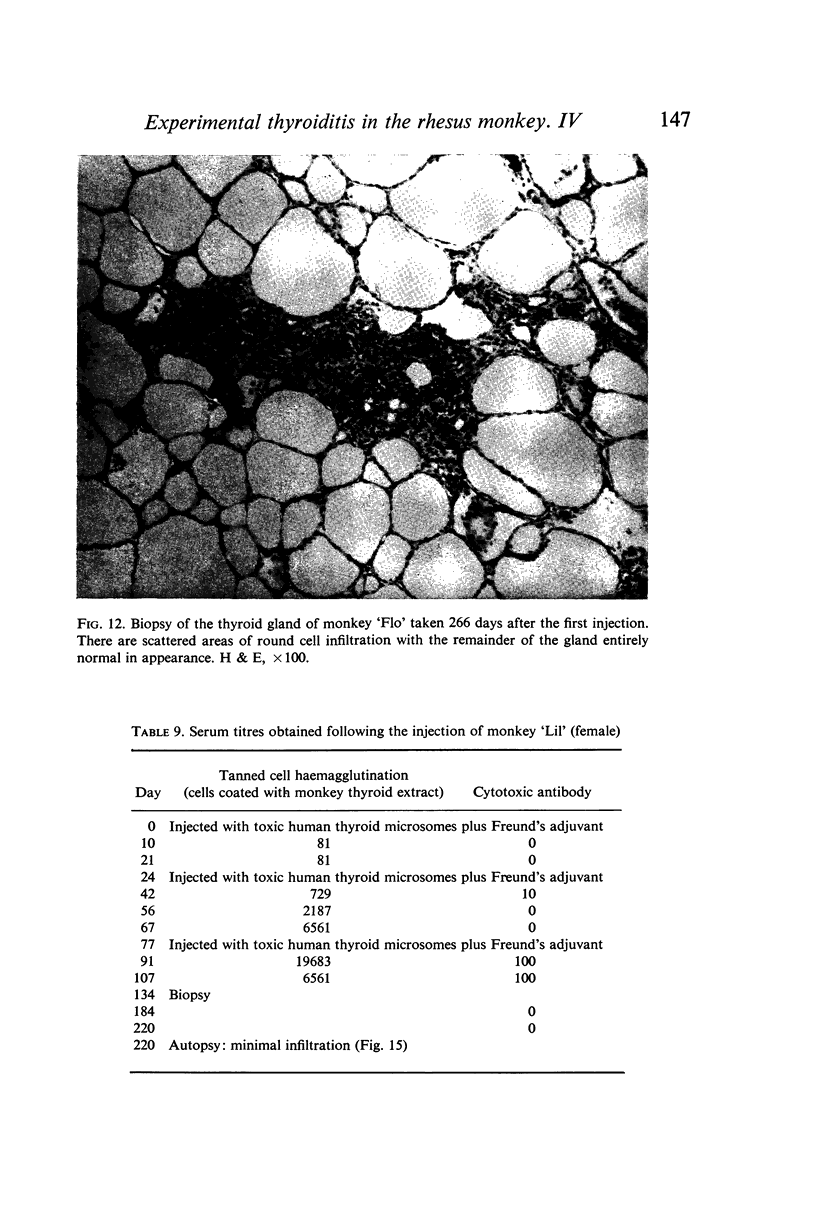
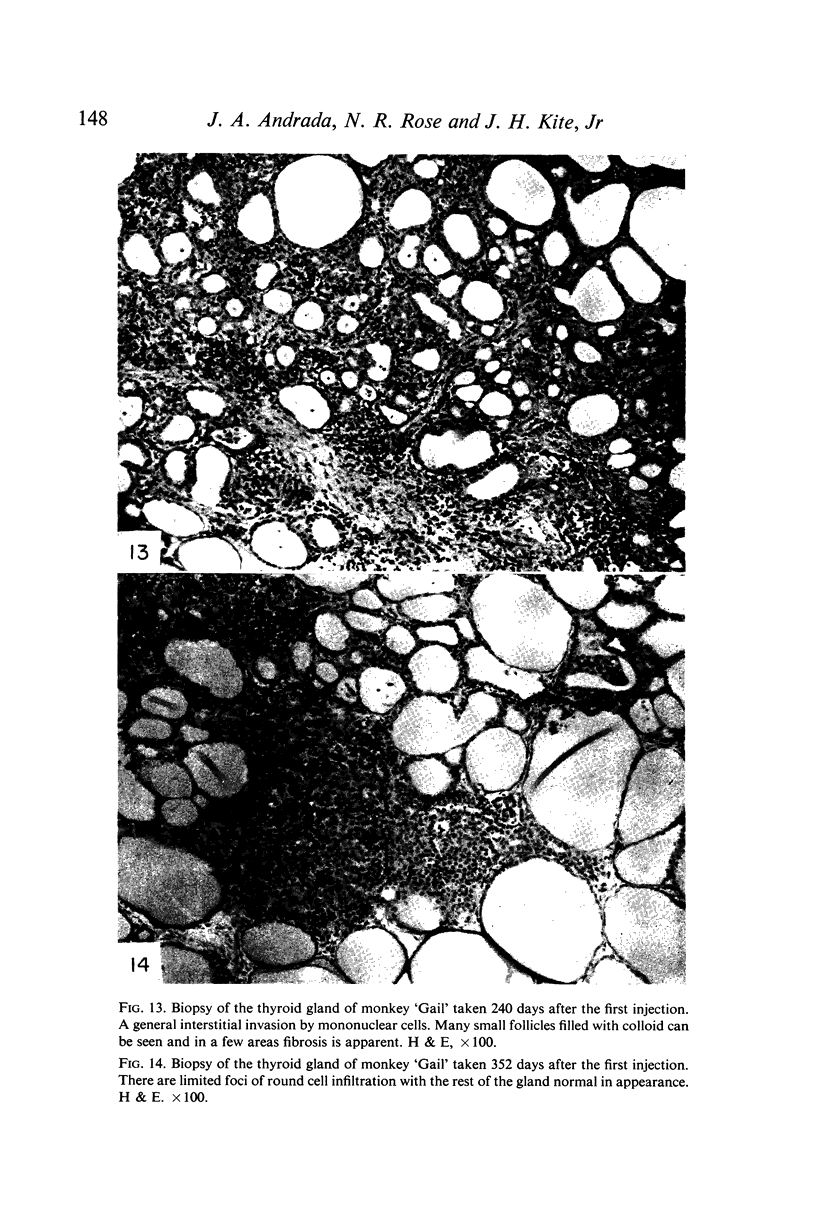
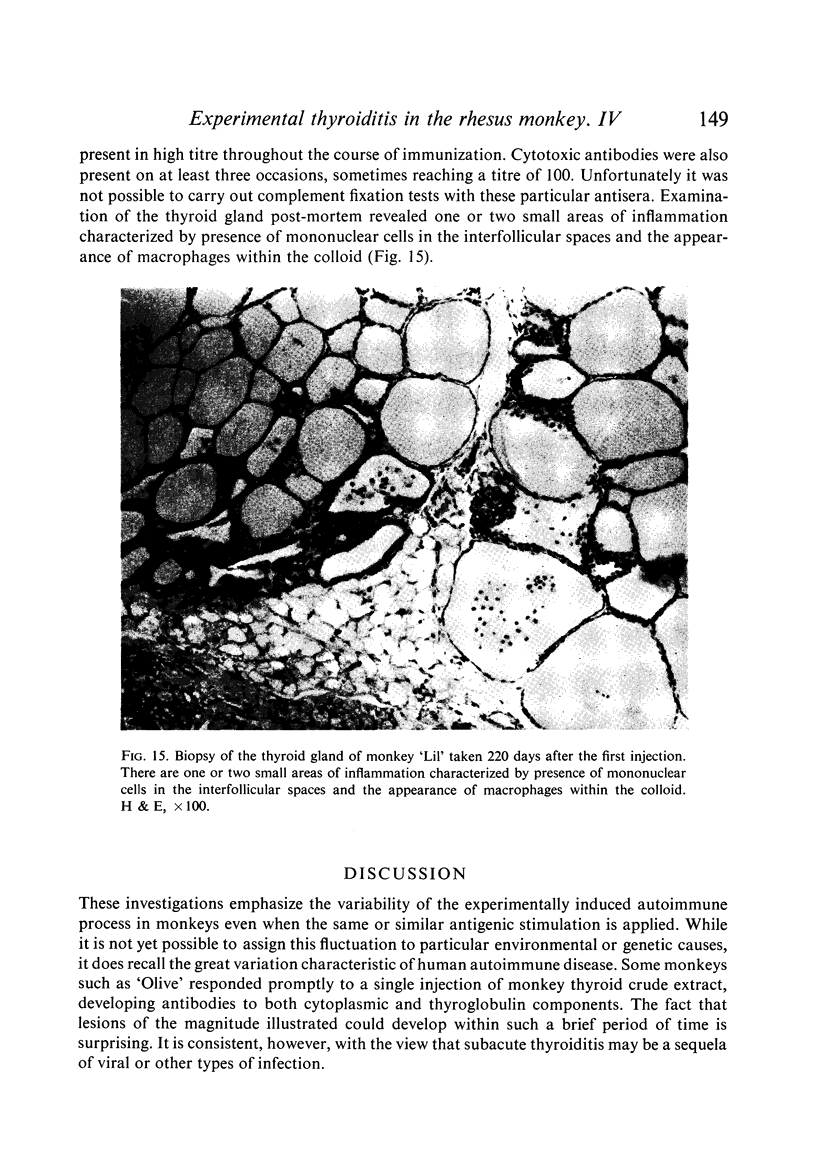
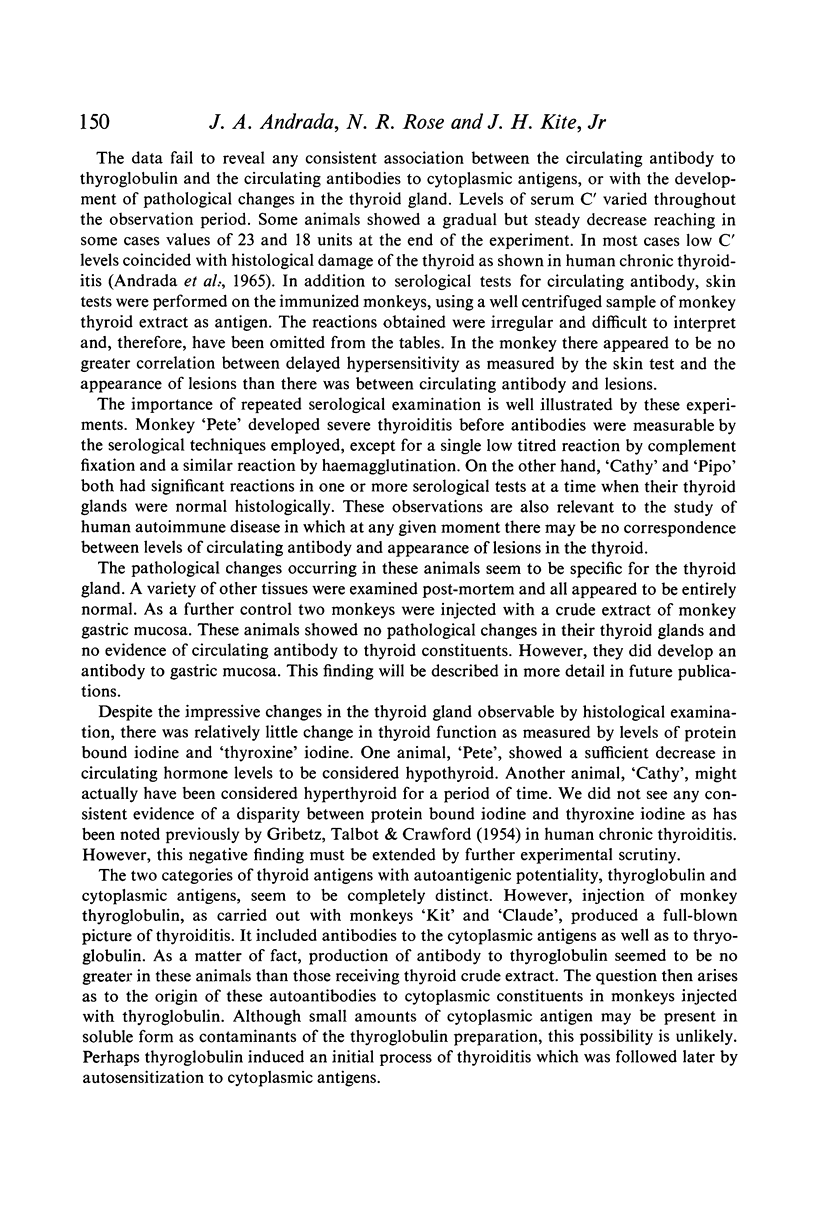
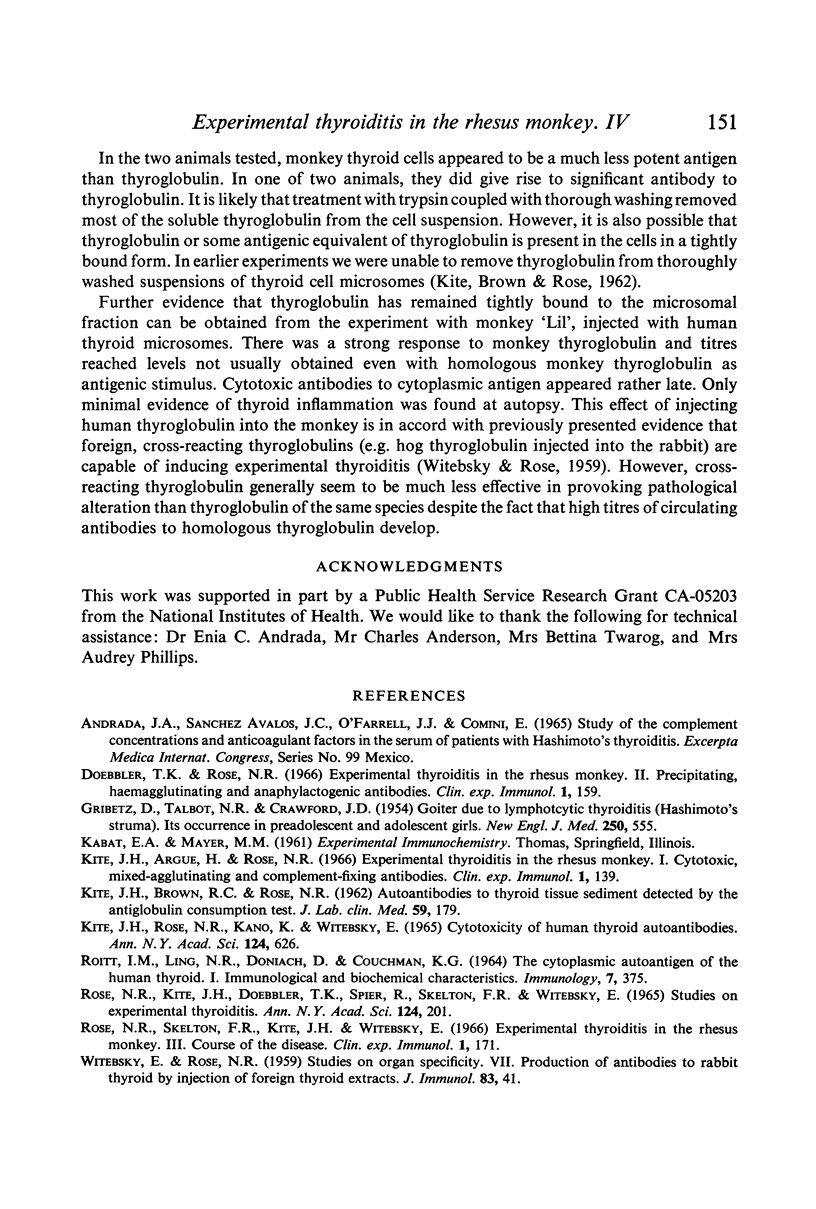
Images in this article
Selected References
These references are in PubMed. This may not be the complete list of references from this article.
- Doebbler T. K., Rose N. R. Experimental thyroiditis in the rhesus monkey. II. Precipitating, haemagglutinating and anaphylactogenic antibodies. Clin Exp Immunol. 1966 Apr;1(2):159–169. [PMC free article] [PubMed] [Google Scholar]
- GRIBETZ D., TALBOT N. B., CRAWFORD J. D. Goiter due to lymphocytic thyroiditis (Hashimoto's struma); its occurrence in preadolescent and adolescent girls. N Engl J Med. 1954 Apr 1;250(13):555–557. doi: 10.1056/NEJM195404012501303. [DOI] [PubMed] [Google Scholar]
- KITE J. H., Jr, BROWN R. C., ROSE N. R. Autoantibodies to thyroid tissue sediment detected by the antiglobulin consumption test. J Lab Clin Med. 1962 Feb;59:179–194. [PubMed] [Google Scholar]
- Kite J. H., Jr, Argue H., Rose N. R. Experimental thyroiditis in the rhesus monkey. I. Cytotoxic, mixed-agglutinating and complement-fixing antibodies. Clin Exp Immunol. 1966 Apr;1(2):139–157. [PMC free article] [PubMed] [Google Scholar]
- Kite J. H., Jr, Rose N. R., Kano K., Witebsky E. Cytotoxicity of human thyroid autoantibodies. Ann N Y Acad Sci. 1965 Jun 30;124(2):626–643. doi: 10.1111/j.1749-6632.1965.tb18991.x. [DOI] [PubMed] [Google Scholar]
- ROITT I. M., LING N. R., DONIACH D., COUCHMAN K. G. THE CYTOPLASMIC AUTO-ANTIGEN OF THE HUMAN THYROID. I. IMMUNOLOGICAL AND BIOCHEMICAL CHARACTERISTICS. Immunology. 1964 Jul;7:375–393. [PMC free article] [PubMed] [Google Scholar]
- Rose N. R., Kite J. H., Jr, Doebbler T. K., Spier R., Skelton F. R., Witebsky E. Studies on experimental thyroiditis. Ann N Y Acad Sci. 1965 Jun 30;124(1):201–230. doi: 10.1111/j.1749-6632.1965.tb18957.x. [DOI] [PubMed] [Google Scholar]
- Rose N. R., Skelton F. R., Kite J. H., Jr, Witebsky E. Experimental thyroiditis in the rhesus monkey. 3. Course of the disease. Clin Exp Immunol. 1966 Apr;1(2):171–188. [PMC free article] [PubMed] [Google Scholar]
- WITEBSKY E., ROSE N. R. Studies on organ specificity. VII. Production of antibodies to rabbit thyroid by injection of foreign thyroid extracts. J Immunol. 1959 Jul;83(1):41–48. [PubMed] [Google Scholar]

















